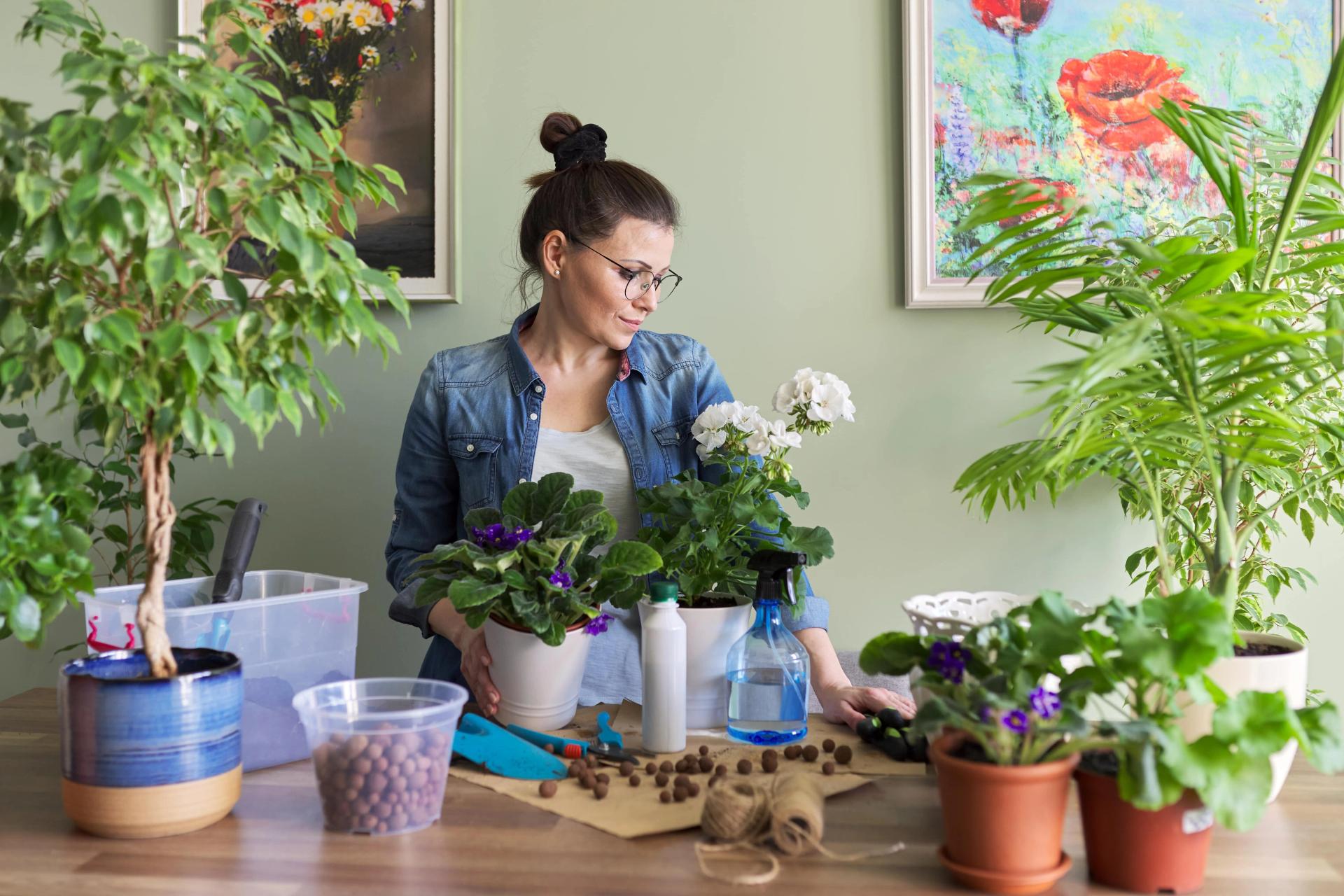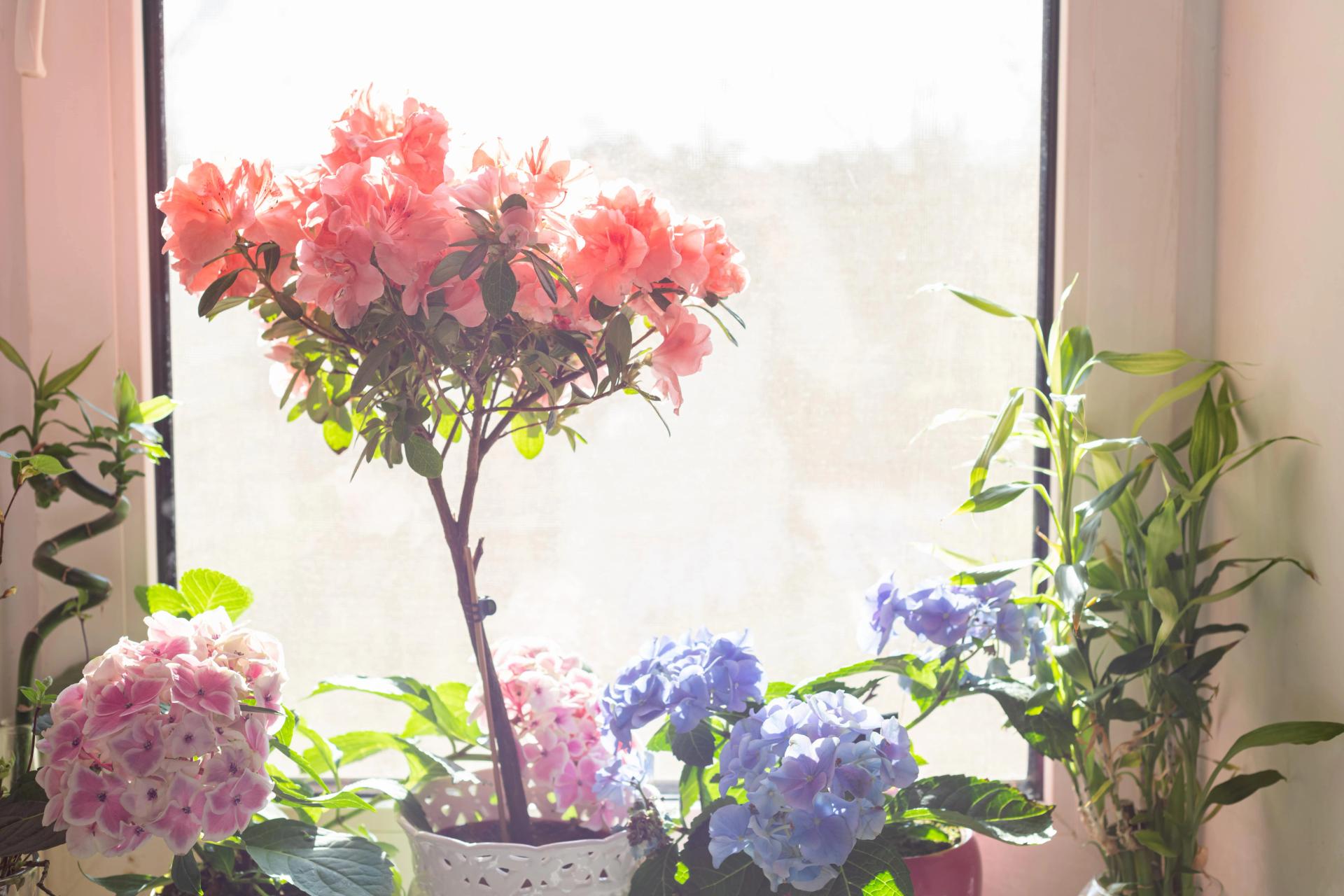Once you have decided which plant you want and where to buy it, the next question is always about providing it with the proper care. Every green pet is unique, however, seems like there is a common recipe for a healthy plant. We know how to make all your greenery thrive and have compiled a handy checklist!

Healthy Plant Selection Process
For the new plant to feel comfortable at home right after the relocation, you need to pay attention to its condition and the following characteristics:
- The cultivar should look good and be symmetrical, with stems and leaves evenly developed on all sides.
- Over-fed plants have leaves that are too bright in color, too thick stems, and very large flowers.
- Inspect the pot for mold and pay attention to the condition of the potting mix near the walls of the pot. This could signify that the plant was dropped or stored in the wrong conditions.
- Check for bugs and pests. If you notice white patches, spider webs, or small bugs, refrain from buying the plant.
Signs Of Healthy Plants
How to understand that your lovely plant is in excellent condition and doesn't need any additional interventions? Here are some examples of what healthy pot plants are.
Fast Growth
Rapid growth has never been a bad sign. If your flower grows and at the same time its shoots do not tilt down, everything goes well. Of course, you need to ensure that the plant does not stretch and become leggy. This usually happens if the green pet does not get enough sunlight, so learn the preferences of your plants and find the spot with optimum light level.
Healthy Leaves Characteristics
The plant health is first displayed on the leaves. If the leaves of your green pet are shiny and bright, deep in color, and have no spots, congratulations - the plant is in good condition. Protect your plants from direct sunlight to prevent burns, even the most light-loving pets may suffer from sunlight exposure in summer. If required, spray the plant with water or wipe it with a damp cloth. In most cases, yellowing of the foliage signals under- or overwatering, insect diseases, or humidity issues, so take measures as soon as you notice it.
Blooming
If your plant tends to produce flowers, you have little to worry about. It might be problematic to achieve flowering in some cases, but fertilizing and proper care do the trick. If you still cannot "make" the plant bloom, then you need to resort to the following tips:
- Most likely, the plant lacks lighting. Place the pot in a lighter area but not in direct sunlight.
- If you are not pruning wilted flowers and leaves, you need to do this soon. This will stimulate the growth of new buds and leaves.
No Pests!
Aphids, spider mites, or other pests indicate that the plant is not healthy and needs immediate treatment. Ensure that there are no drafts and humidity is not too high in the room since the pests reproduce faster in such conditions. If, nevertheless, pests are wound up, use fungicides or neem oil. Track your plant health progress every day to not overlook insects.
Healthy Roots
To check whether everything is ok with your plant, look at the root system (check through the drainage holes or remove the flower from the pot). Make sure the roots are not rotten. If there is insufficient nitrogen in the root system, the leaves, especially the older ones, become covered with light green spots. Healthy plant roots guarantee your plant to live a longer life and have fewer illnesses.

Signs of Poor Plants Leaves' Health
Have you ever wondered how to grow healthy plants? Firstly, pay attention to the leaves and their condition. They may tell you way more about plants than you think.
Loss of Foliage
Several causes can lead to leaves curl and fall. If the plant has been standing in a drafty or cold place or lacks magnesium, potassium, and other nutrients in the soil, it will result in loss of foliage.
Yellow Leaves
Usually, the lower leaves turn yellow and fall off naturally, it is a normal stage of development. But if new leaves turn yellow, this is not a good sign. In summer, it can be caused by dryness or lack of light, while in winter, it can be caused by high temperatures at night.
Brown Tips
If the edges of the leaves are yellow or brown, it may be due to insufficient watering, light or temperature, lack or excess of nutrients in the soil, and humidity issues.
Brown Dots or Spots
Dots and spots can be dry - then it is a sign of lack of moisture in the soil, and wet - a sign of overwatering. If the marks on the leaves are soggy and swollen, it's a disease caused by pests.
Light Spots
Some plants do not tolerate direct sunlight, with prolonged contact with the sun resulting in burns on their leaves. The degree of damage depends on the amount of time spent under sunlight.
Common Care Tips On How to Grow Healthy Plants
The following tips will help any plant stay alive and healthy:
Provide Sufficient Lighting
Make sure your plant gets enough natural or artificial light. Each type of plant needs a different amount of sunlight per day, so read care instructions for each species you own and place them according to their preferences.
Use High-Quality Water
Watering plays one of the major roles because the plant's vitality depends on it. It is from water and soil that the plant receives all the necessary nutrients.
To calculate the amount and frequency of watering, use the PlantIn app to check plant health. Also, we recommend rainwater or springwater for the plants.
Don’t Forget About Drainage
Pots with a drainage system allow water to pass through, thereby protecting the plant from excess moisture. Drainage holes are a must for any planter. Moreover, make sure to add a 1-1.5 inch drainage layer in the bottom of the container. You can use ceramsite, brick fragments, small pebbles, etc.
Use High-Quality Soil
Choosing suitable soil is essential for the health of houseplants. Rich in vital nutrients, it provides proper growth. Also substantial is the acidity of the substrate and its composition. Note that different houseplants require different soils, but universal potting mix is suitable in the majority of cases.
Prune Regularly
Regular pruning is done to clean the trunk, separate new shoots, shape the foliage, or rejuvenate the plant. The main rule for pruning is to work with sharp and disinfected tools so as not to injure the plant and not to infect the fresh cuts.

FAQ
How Can You Make Sure That a Houseplant Stays Healthy?
Check the leaves regularly and repot the plant to check the condition of its roots. Visually, it will always be obvious that you have a healthy pot plant: it foliage will be lush, and it will grow fast.
What Do Houseplants Need to Stay Healthy?
Each species needs specific treatment, so before buying a new plant, read the care recommendations from our database. A complex of the proper placement, amount, and quality of watering, the right temperature, and lighting are how to keep plants healthy.
When Does Wilting or Discoloration Mean Disease, Not Normal Growth?
Wilting or fading leaves can mean trouble if they spread fast, show spots or mold, or affect new growth. But if only a few old leaves change color while new ones look healthy, it’s usually normal. Always check for pests, overwatering, or poor light before worrying about disease.
